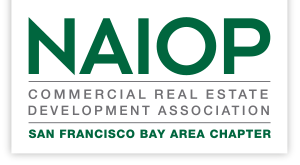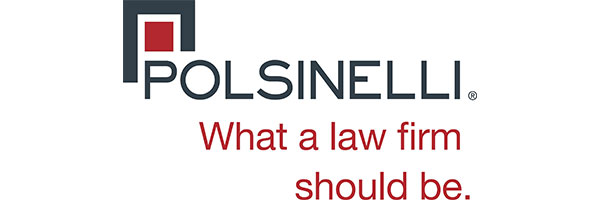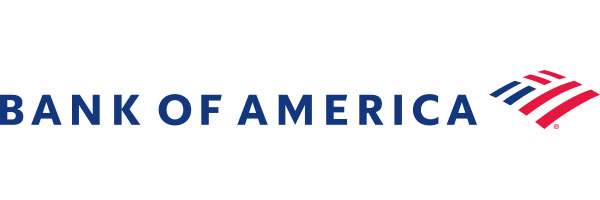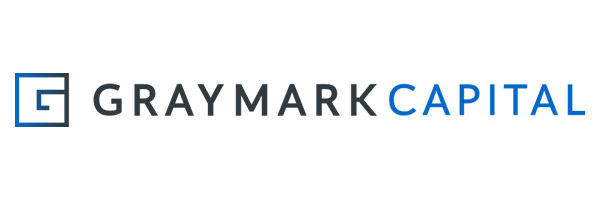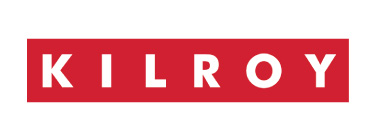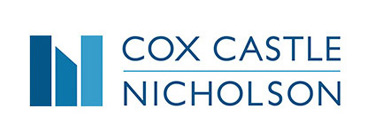Recap of the Zoom-In Webinar: 2021 Kick-off - Market Outlook

NAIOP SFBA held its first Zoom-In webinar of the year on Thursday, January 28th with 2021 Kick-Off – Market Outlook. The timely program featured a comprehensive look at the state of commercial real estate around the Bay Area and across asset classes. Adam Lasoff, Managing Director, Capital Markets, JLL and NAIOP SFBA 2021 Chapter President moderated a candid conversation with an all-star panel comprised of four of the most knowledgeable and active players in the market including:
David Dowdney, Senior Vice President, Columbia Property Trust
Caitlin O’Connor, Executive Director, Portfolio Management, PGIM Real Estate
Benjamin Kochalski, Regional Partner, TMG Partners
Rebecca Perlmutter Finkel, Executive Vice President, Institutional Properties, CBRE / Capital Markets
Here is brief recap:
Industrial Market Overview
Question - Obviously we are seeing the most positive traction in the industrial space. What are you seeing both from a leasing and capital markets standpoint?
The panel articulated that ecommerce is continuing to driving strong industrial demand. Consequently, they are seeing tremendous demand from investors and a shift in cap rates as investors adjust return thresholds and lean in on the industrial market. Many institutional investors are making industrial their first priority and are allocating significant portions to build- to-core.
Key metrics:
- IRR’s for core product have shifted from the low to mid 6’s to the mid 5’s and could go lower
- Several transactions in SoCal now with mid 3 cap rates on deals that have 5 years of term or more.
- Mid 3 cap rates are expected to translate up to the Bay Area
- CBRE ranks Oakland as the top rent growth market in the country over next 5 years with 8% annual growth / 2nd is LA with 7% growth
- Very attractive debt also helping / seeing 2.5% range, 50-55% loan to value
- Construction loans 3.25 – 3.5% range, 55 – 60% loan to value
Industrial Land Values
Question – We keep hearing about land values going up with the likes of Amazon? Where are price levels going? Is it sustainable?
The panel is very bullish on land value growth yet did point out that construction costs are rising as well. One panelist indicated they recently closed on a site for industrial redevelopment in So SF at the end of 2020 for $215 per land sf. The deal illustrates demand for last mile infill. As a comparison, it was noted that there has been high land price appreciation in Southern California. Currently East Bay land prices are in the low $60’s and are predicted push to $70-$80’s soon.
Question - On the topic of Amazon, we hear how strong the leasing market is. What does the leasing market look like beyond Amazon?
The panel expressed that last year about 16% of all absorption of units over 100K sf was Amazon, totaling about 78M sf. That trend is projected stay in 2021 and 2022 as Amazon fills out their network. Amazon’s main drivers are searching for labor, (which has become a big constraint), and building out their hub and spoke with last mile facilities. The sector is continuing to see demand from other ecommerce users such as Walmart, Home Depot, Target and the Third Party Logistics (3PLs) that support them.
Last mile logistics has become a bit of a bottle neck with ecommerce. The 3PL’s do not need the brand new buildings Fueling demand further was the realization last year that the US needs more safety stock. The supply chain is so global and needs to better support just in time delivery. This fact is driving every consumer goods company to increase their inventory levels. The panel highlighted the demand for cold storage as well.
Office Market Overview
Question – What is the view in terms of leasing activity as we come out of this? What are your tenants telling you? Where are you finding opportunity in this environment where you have limited data points a lack of product? How are you spending your time on the buy side?
The panel agreed that the Life Science sector continues to be the bright spot in the Bay Area office market. Single and two story R&D product is performing better than the pure office side where leasing has been reduced to a trickle. Tenants say they are waiting for wide vaccination distribution before signing leases. Larger multinational tenants report that they are re-evaluating everything. Potential for pent up demand exists as tenants are still hiring. The buy side is tough given the lack of data points, there are signs of, however, of corporate user sales picking up.
Impact of Pandemic on Future Office Demand
Question: Work from home is all over the news. How do you see it impacting demand?
Panelists concurred that there will be some level of permanent change. However, tenants, particularly larger users, continue to focus on being able to have in person collaboration. They shared that some tenants have studied productivity and reported that it was higher at the beginning and then dropped off. One telling anecdote revealed that a major tech company with offices in San Francisco and New York initially decreed tenants could work from home forever then reversed course. They decided to expand in both locations and has set a return to work date. Additionally, there is a belief that dedensification may offset some to the impact of work from home on footprints as users employ new workplace strategies.
Exodus of Bay Area Corporate Users
Question – With all the headlines about corporate relocations how do you defend that to Wall Street and your investors? Is it going to be a continuing trend? What does it mean for the Bay Area?
The panel agreed that headlines and reality seem to disconnect. They discussed the fact that tenants continue to say that they want to innovate, collaborate, raise funding, meet with VC’s and they need to have a presence in the Bay Area to do that. They commented that sharing information about large leases signed is the best way communicate with investors about the trend.
Mature companies with back office functions are mostly behind the migration trend. However, the panelists expressed concerned about backfill. Currently as mature companies leave the region space is backfilled by high growth companies. If new startups that would normally backfill have begun in a work from home culture they may have different needs than other companies as they mature.
Property Management in the Post COVID Environment
Question - Do you see changing how you running buildings?
The panel concurred that there was already an amenities arms race happening. COVID has accelerated it and added a health twist. They have asked tenants what they want and have heard opinions. However since they are yet to return to work it is unclear what they will ultimately need.
Life Science Conversions
Question - What does a life science conversion look like from a cost stand point? What does a typical TI dollar look like? Is capital getting comfortable coming in at that type of basis level?
Panelists agreed that conversion costs vary depending on how you build your business plan, if you plan to spec the capital and what type of bones you are starting with. One panelists shared that their group is looking at a conversion currently where the spend including TI’s is roughly $400 sf and indicated they are seeing a lot of the value add deals getting up to $1k sf all in.
Question - Do you see any of the unentitled our entitled land in San Francisco once seen as office being potentially converted down the road if the City allows it?
The panel reported seeing many entitlement opportunities throughout the Bay area with life science potential. The comment was made that there are many of discussions happening about San Francisco’s PDR classifications may be way to achieve entitlements.
Housing Marketing
Question – What is the state of the currently housing market in the Bay Area? Are there continuing to be development opportunities?
Panelists expressed that there are more opportunities on both the rental and for sale side than for than anyone knows what to do with. However almost none pencil. Rents have plummeted by 10 – 25% and there are too few data points regarding construction costs so it is hard to manufacture land value. There are still a few deals getting done, however volume is down substantially.
Fundraising
Question - We keep seeing negative headlines about some of the open-ended funds. Are you still finding success with your existing investors or new investors?
The panel commented that in Q2 there were a number of redemptions across the open-ended fund space and a big pause in new commitments. There was an uptick in Q3 and Q4 with a more visibility into how tenants and landlords were behaving. There are still some redemptions happening, however, there are entry cues as well. People are get more bullish having at least a read on some optimism in 2021. The panel expressed strong consensus that tenants believe employees want to be in the office and the Bay Area has too much going for it to suffer for too long.
Capital Markets
Question: Who is the capital that is paying those prices for Industrial product?
The panelists expressed that most aggressive capital is core funds including some of the more traditional ones. Core funds are individually rotating in and out as they balance the hot money against the rest of their portfolio. Some of the industrial funds are doing build-to- core, buying some Class B, looking in different locations with higher yields and then balancing some acquisitions with lower cap rates. In smaller deals panelists are seeing exchange capital or high net worth capital.
Question: In the office market we keep hearing that the dry powder is at all-time highs. What have your capital partners telling you? Are they looking to make a play in this environment or are they still waiting for data points?
Panelists are seeing more capital partners interested in alternative asset classes, particularly life sciences. Many traditional partners are without allocations for pure office plays. The investment community knows there are very few opportunities on the market for sale.
Cap Rates
Question - How low can they go on the industrial side?
The panel expressed strong belief that cap rate compression will continue. However, because not all deals are created equal and micro elements factor in such of length of leases and building size rates will vary. Given the supply and demand equilibrium now sellers are hesitant to sell because it is hard to aggregate industrial. Developers are partnering with groups that are long term holders. People are very bullish about rent growth
Question – Do you think you will start seeing downward pressure on cap rates on office side because of what’s happening on the industrial side? How are you underwriting exits?
Panelists agreed that with the lack of sales volume this year and ample capital chasing it, cap rates will be held down for private capital. In terms of underwriting exists, the panel expressed for single tenant credit execution they are seeing 25 -30 basis points inside of where they were. On multi-tenant execution they are much more challenging to predict.
Members: Click here to see the replay. Not a member? Join today to get access.
